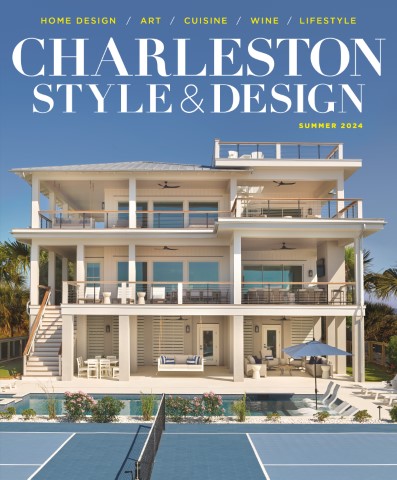Architect Marc Camens is a mindful person, and when he arranges space, he leaves enduring mindfulness in his wake. His latest project, a 5,500-square-foot family homestead built by R.M. Buck Builders on Kiawah Island, is a perfect example of how a home can be an active contributor to a good life, instead of just a backdrop.
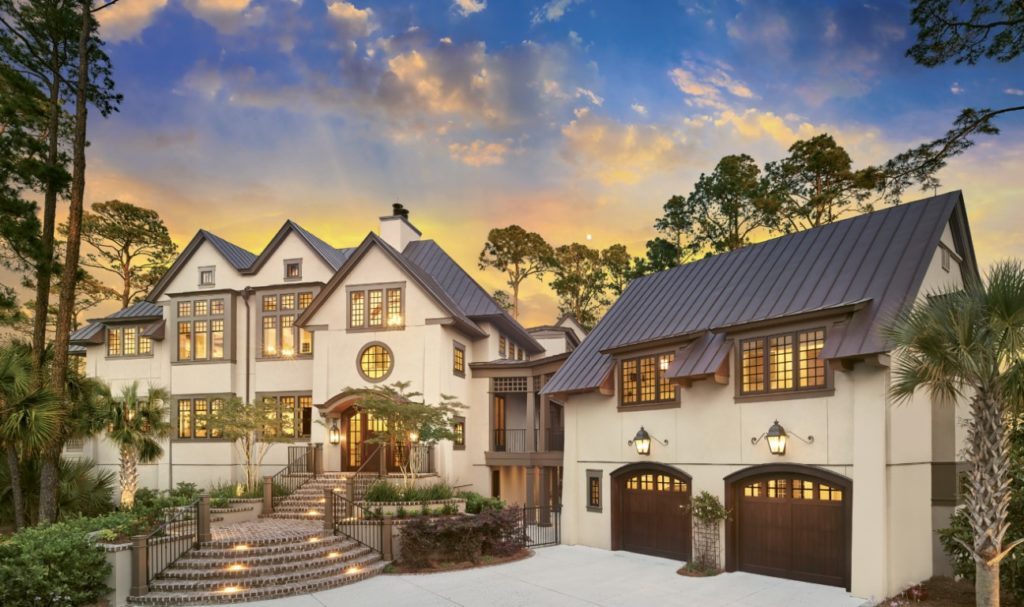
With good memories of vacationing at a family home in the Adirondacks, the clients wanted a place where the extended family could gather comfortably and where grown children would want to visit with their own families and friends. “My parents’ Indian Lake home was a gathering place where we created a lot of memories, and we wanted to create a similar style for this next chapter of our lives,” the homeowner says. In addition to Adirondack Camp style, they wanted to incorporate architecture and design elements from all of their homes so the new home would have a recognizable continuity.
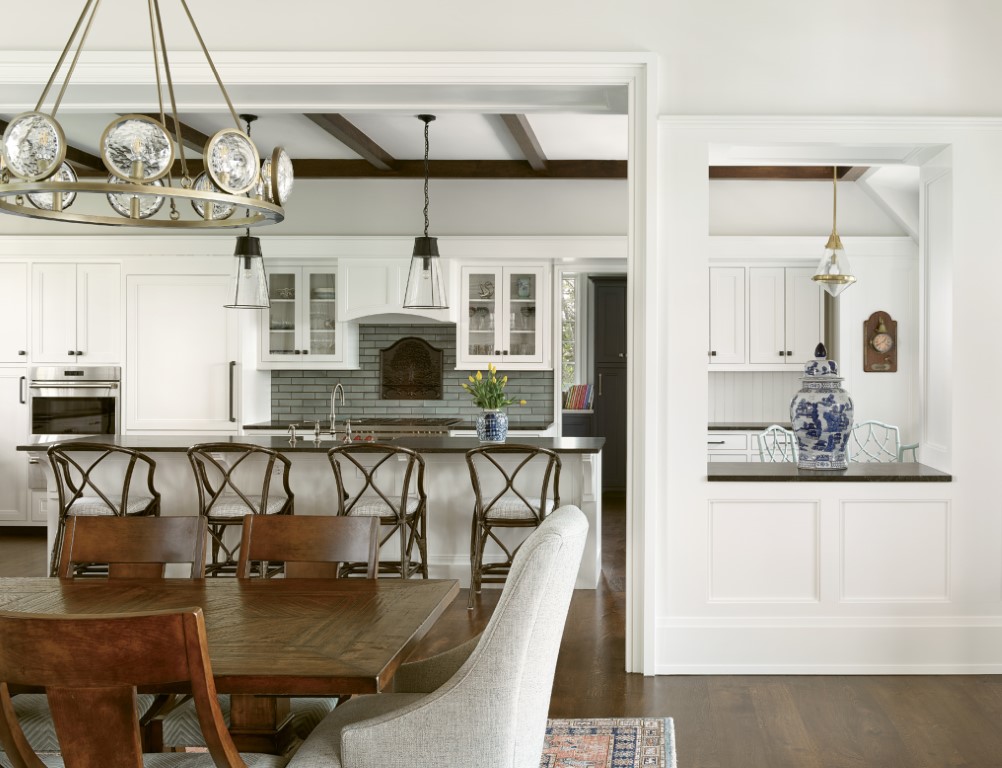
Adirondack Camp style is inspired by Great Camps, those multibuilding estates built in the late nineteenth century on lakes in the Adirondack Mountains of New York. In Great Camp style, separate buildings are connected by covered walkways and scenic paths. Having spent nearly two decades in the Adirondacks, Camens was a natural fit. For interiors, the homeowners chose Laurin Malatich and Beth Cochran of Malatich Cochran Design. Malatich is a trained architect who takes charge of finishes and project management, while Cochran takes the lead for furnishings, fabrics, window coverings, antiques and accessories. “The homeowners wanted our help to combine their other homes into one family home,” Cochran says. “Our job was to take their ideas and create something unique that’s their own.”
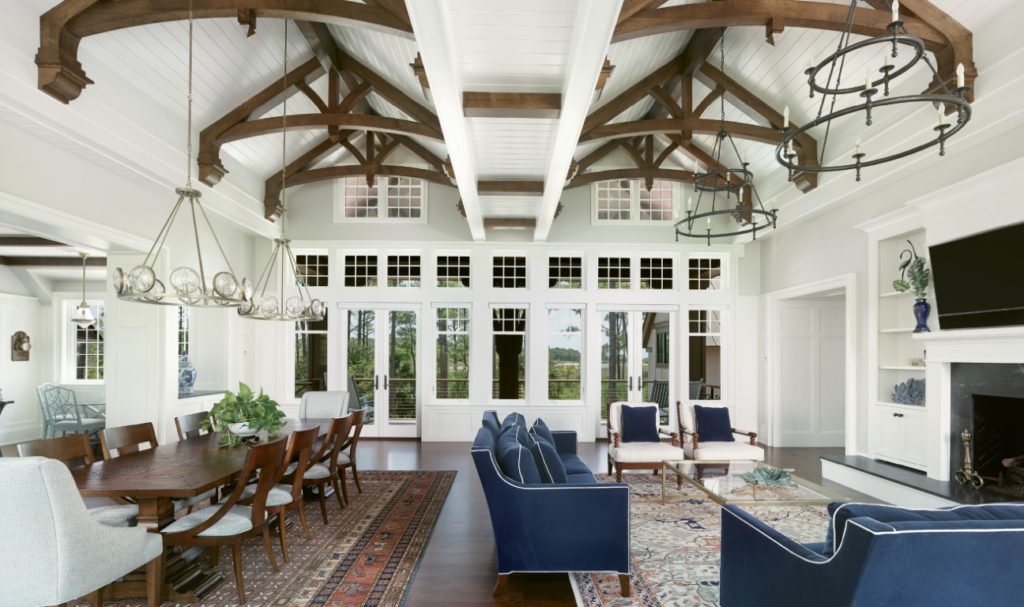
Camens’ design incorporates the essential elements of Adirondack style with aspects of the other homes where the family spent time together. Because the neighborhood has regulations that require elevations to incorporate Voysey Arts & Crafts style, the architect also needed to blend the fourth style into the design. The result is a light-filled Lowcountry beach house with all of the elements that make Great Camp style fun and nurturing.
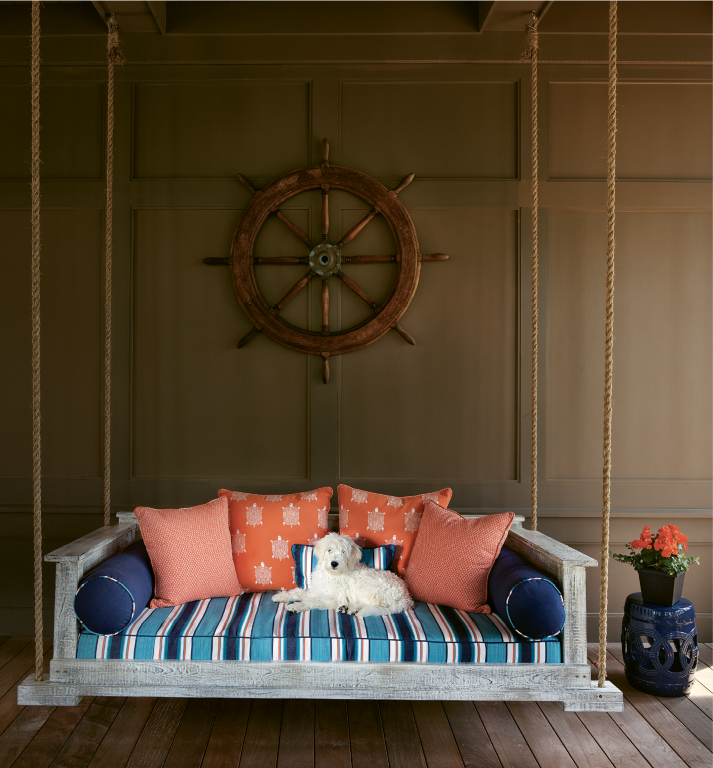

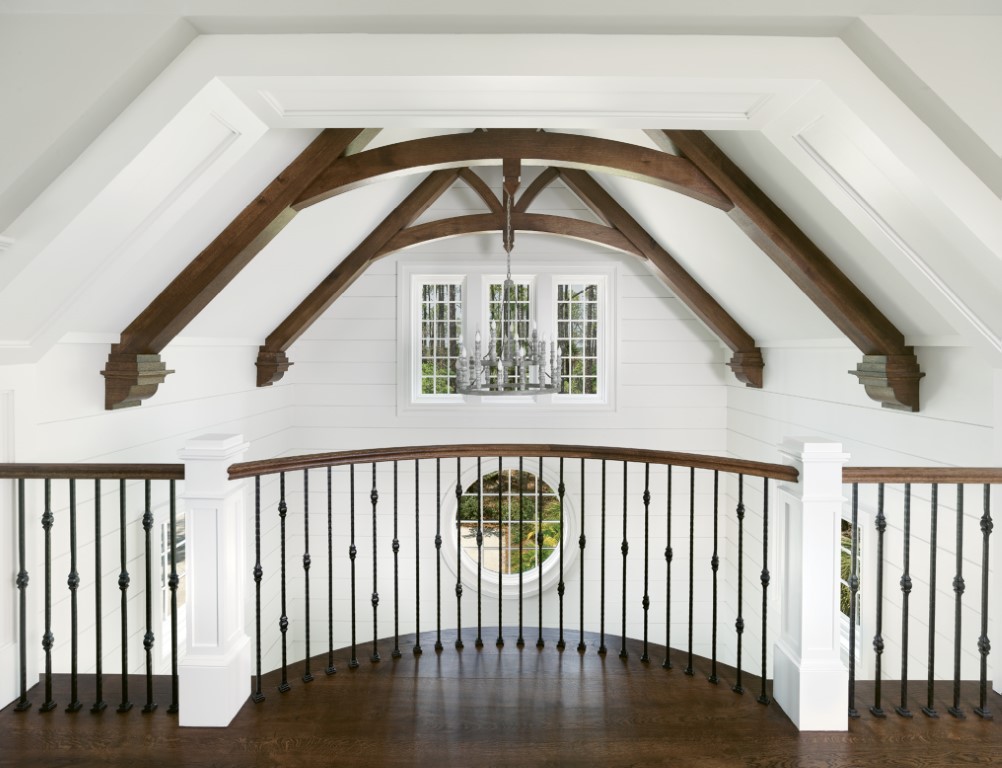
The homestead is on a large wooded lot with views of the Kiawah River, the inlet and the Atlantic. Structures on the property include the main house, a garage with an apartment on the second floor, a separate screened porch and a river cottage guesthouse. The main home is a reverse floor plan, with living spaces on the second floor and guest and working areas on the bottom.
As we enter the main house, natural light floods through high two-story windows. The entry is designed so guests know where to go; the eye is drawn upward to the second story, creating a feeling of connection between the living space and the door. There is a home office on this floor as well as guest rooms and a den that serves as a private living room for guests.
Up the stairs, Camens doesn’t just toss you into the action. The stairs open to a second entry with extra-deep doorways that lead into the kitchen, dining and living room. The second entry feels dignified and welcoming without coming off as formal. “I don’t ever want people walking through a 4-inch doorway,” Camens says. “I want you to feel like you’re going somewhere.” We pass through the doorway to enter the Great Room, the architect’s version of a Lodge Room.

From the large fireplace to the exposed beams and high windows, everything about this space says this is where people gather.
The kitchen, dining and living room are open but visually separated into three bays. The kitchen has a cozy lower ceiling, while the living and dining area has a vaulted ceiling with high windows and beautiful exposed trusses.
Down the hall and to the left, we cross the glassed-in bridge that leads to the primary bedroom. The glass hall also creates a covered walkway to the detached screened porch. The room is right-sized to feel light and open without being cavernous. Since the home is built for lots of people to be there, and the homeowner emphasizes that they want it to be full of people, this bedroom has a private deck for quiet time.
In true Adirondack Camp style, there are four distinct outdoor areas. There is a large screened porch set away from the main house, a pool with a large deck, an outdoor kitchen and an extensive viewing porch interconnected by walkways. To reach the guesthouse, we follow a lovely path through the trees. The house is snuggled into the trees the way a good camp cabin should be. It is small-scale and designed with organic components that connect the structure with nature.
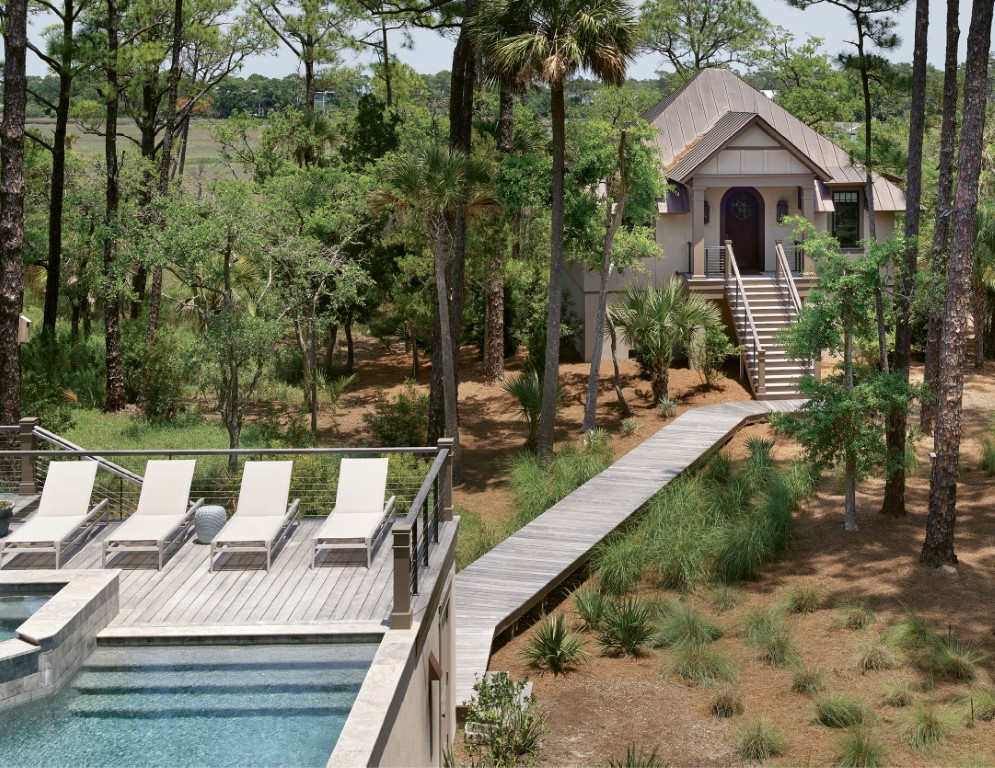
All of Camens’ homes are filled with light, but the quality of light in every structure in this home is truly remarkable. “My houses are full of light,” Camens says. “That’s why I design from the inside out.” He’s referring to his practice of working backward from the way many architects work. As part of his distinctive process, he learns how his clients live through interviews and observation; then he gets to know the site. He’s even been known to camp on a building site to truly understand it. Then he designs the inside of the home and wraps the elevation around it.
“The energy of a house is all about light and flow,” Camens says. This is a concept he learned from his mentor and friend, renowned Hamptons architect Norman Jaffe, who once told him, “Marc, you have to reveal the light, not find it.” In other words, light is everywhere. Thinking of a resource as abundant means we only have to let it in, not work to attract it. Creating a feeling of abundance is one of Camens’ specialties, and it shows in the many thoughtful details in the home.
“When the architect, builder and designers bring their expertise to the table, the client is the one that wins,” interior designer Laurin Malatich says. “We loved having this team together again.”
Robin Howard is a full-time freelance writer in Charleston. See more of her work at robinhowardwrites.com.
